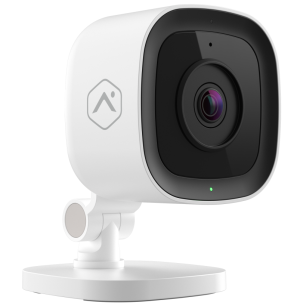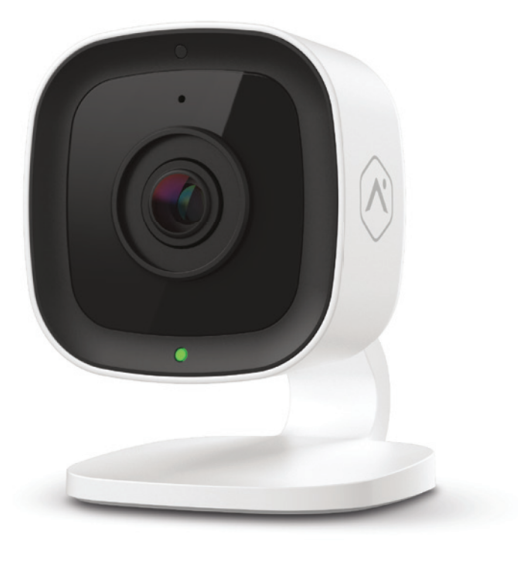Top Alarm.com Camera Picks
Posted By Michael GorisFor Alarm.com Cameras, it can be a bit overwhelming with all of the great options available. Today, we're going to keep things simple by checking out the three (3) cameras that provide the best features and ease of use for the typical homeowner. Here are the top picks for Alarm.com Cameras.

The cameras we are checking out today are all built for residential use. However, you should have no problem using them to monitor a small business if needed. These cameras are differentiated from the Alarm.com Commercial Cameras because they do not have an extra C in the SKU, or name. Any Alarm.com Camera with a SKU of ADC-V###, with the ### representing a three digit number is a residential camera. They should not be confused with the cameras with SKUs in the ADC-VC### format. That extra C after the V indicates Commercial. And while the Alarm.com Commercial Cameras are fantastic, and they can certainly be used in the home, most residential users will have an easier time getting started with the corresponding residential cameras.
As far as what makes the residential cameras different from the commercial cameras, there is one feature that really stands out. The Alarm.com Residential Cameras are WIFI cameras that connect wirelessly to the local WIFI you already have set up in your home. But the Alarm.com Commercial Cameras are typically Power Over Ethernet (PoE). A PoE camera will not connect wirelessly to WIFI. Instead, you will need to run an ethernet cable to the camera, which will supply both internet and electrical power. A non-PoE WIFI camera will instead have its own plug-in transformer that you can just plug into any outlet. While many users appreciate the ability to set up a camera with PoE, most homeowners will have an easier time just connecting the camera to WIFI and finding a nearby outlet to use. Therefore, when it comes to residential cameras, WIFI is considered supreme.
For any Alarm.com Camera, you will need a monitoring plan that includes video surveillance to start using them. If you already have a security system that uses Alarm.com, such as a Qolsys IQ Panel 2 Plus or a 2GIG GC3e, then you will likely just need to upgrade your existing monitoring plan. If you are new to alarm monitoring and plan on setting up a security system as well, then the Alarm Grid Platinum Plan is a great option that combines top-of-the-line alarm monitoring service, including central station coverage, with the video surveillance features that you and your family need. Or if you don't have a security system, and you just want to use Alarm.com Cameras, then you may explore the Alarm Grid Video Only Plan, which offers affordable video surveillance for users who just want that service.
Of course, for any video monitoring plan, you will need some cameras, so let's get into the three Alarm.com Cameras we intend on checking out today!
First up we have the Alarm.com ADC-V523, which is honestly the go-to Alarm.com Residential Camera for standard, indoor use. It is the gold-standard of Alarm.com Cameras, offering all of the features and performance you could possibly want. It has a premium image sensor (1/2.7” CMOS, 2.1 MP, 1920 x 1080, HDR) and camera lens (3.0mm, F2.0) to capture activity around your home in true 1080p quality, with High Dynamic Range (HDR). Also included is IR Night Vision, which effectively captures video at night or in an otherwise dark setting from up to ~15 feet away. And a viewing angle of 117° ensures that no action is missed, providing a wider coverage area and field of view (FoV) for when you need it most. Simply put, if you need an indoor camera, and you don't want to sacrifice anything in terms of quality, then the Alarm.com ADC-V523 is for you.

But if you don't need quite all the bells and whistles, then you might instead consider the new budget camera from Alarm.com, presenting the Alarm.com ADC-V515. This camera offers all of the same features as the premium ADC-V523, with a slightly toned down image. You still get the 1080p quality and High Dynamic Range (HDR), but the image sensor is a bit reduced (1/3", 2.12 MP, 1920x1080, HDR), and the lens is just a bit smaller (3.19 mm, F2.2). Also viewing angle FoV is 7-degrees reduced at 110°. But otherwise, this is pretty much the same camera. You still get the ~15 Feet IR Night Vision and all of the other great features. Quite frankly, most users will not notice any bit of difference with this camera. If you want an outstanding camera at the best price Alarm.com can offer, then the Alarm.com ADC-V515 is for you.

Last but not least is Alarm.com's best offering for a residential outdoor camera, the Alarm.com ADC-V723. This premium outdoor model brings the same features and performance as the ADC-V523, but presents it in a package that can withstand the harshness of an outdoor environment. Returning is the same fantastic image sensor (1/2.7” CMOS, 2.1 MP, 1920 x 1080, HDR), camera lens (3.0mm, F2.0), and wide viewing angle FoV (117°), but there are two (2) things that separate this camera. First, the ADC-V723 has an amped up IR Night Vision range of ~40 feet, compared with just ~15 feet of the indoor model. This is important if you have a big backyard and need to capture night prowlers in the act. And the second change, making the camera perfect for ourdoor use is the ingress protection, IP66. You can trust this camera to work perfectly even with exposure to rain, snow, wind, heavy sunlight, and heavy dust. It will keep on recording strong and monitoring your home for suspicious activity. If you want a tremendous 1080p HDR outdoor camera, then look no further than the Alarm.com ADC-V723.

If you have any questions about the Alarm.com Cameras we presented here today, or any of the other cameras offered from Alarm.com, please send an email to suppor@alarmgrid.com. We are happy to help you find the perfect cameras to use around your home. Our hours for checking email run from 9am to 8pm ET M-F, so keep that in mind when contacting our support team. We look forward to hearing from you!

 Of the 52 publicly traded smart home automation companies followed from January 2020 to January 2021, 38 saw their stock price increase, compared with only 14 that experienced a decline in stock price across the same time frame. For comparison, a similar study of 52 smart home automation companies from the year prior reported that only 8 companies saw stock price declines in 2019, while the other 44 companies had their stock prices increase. Because of this, we can't say that the smart home industry was stronger in 2020 compared with 2019. But 2020 was still a fairly successful year. And as the economy looks to recover following the COVID-19 pandemic, we expect that things will only get better in 2021.
Of the 52 publicly traded smart home automation companies followed from January 2020 to January 2021, 38 saw their stock price increase, compared with only 14 that experienced a decline in stock price across the same time frame. For comparison, a similar study of 52 smart home automation companies from the year prior reported that only 8 companies saw stock price declines in 2019, while the other 44 companies had their stock prices increase. Because of this, we can't say that the smart home industry was stronger in 2020 compared with 2019. But 2020 was still a fairly successful year. And as the economy looks to recover following the COVID-19 pandemic, we expect that things will only get better in 2021.


 We do have one thing to mention for users of the Qolsys IQ Panel 2 Solar Integration. If you are using the IQ2 Solar Integration then, DO NOT UPGRADE TO 2.5.4
We do have one thing to mention for users of the Qolsys IQ Panel 2 Solar Integration. If you are using the IQ2 Solar Integration then, DO NOT UPGRADE TO 2.5.4